| Amount Per 1 bag | |||
| Calories | 80 Kcal (335 kJ) | ||
| Calories from fat | 0 Kcal | ||
| % Daily Value* | |||
| Total Fat | 0g | 0% | |
|---|---|---|---|
| Sodium | 10mg | 0% | |
| Total Carbs | 19g | 6% | |
| Sugars | 11g | 44% | |
| Protein | 1g | 2% | |
| Vitamin C | 60mg | 100% | |
| Vitamin A | 5mg | 167% | |
* Percent Daily Values are based on a 2000 calorie diet. Your daily values may be higher or lower depending on your calorie needs.
Find out how many calories should you eat.
Ingredients And Nutrition Overview
Best
choice Good
choice Poor
choice Avoid
it!
choice Good
choice Poor
choice Avoid
it!
-
WeightWatchers Points: 1.6, PointsPlus: 2, SmartPoints: 4
WeightWatchers Points are estimated by carbohydrates, fats, protein and fiber in product. They are not an affirmation of better quality or nutritional value of the product or its manufacturer. Only way to count for dieters. Less points are better.
Read more at Weight watchers diet review -
4.5 tsp of sugars per serving
This includes both naturally occurring and added sugars. According to the USDA, every man woman and child in the US consumes approximately 80 pounds of caloric sweeteners per year! That works out to 25 tsp of sugars per day, or 400 extra calories!
-
Contains controversial artificial colors
Once upon a time, there were no food colorings. Then folks figured out that food looks better and sells more when it can be enlivened through dyes. For most of food history, the dyes were from natural sources – beet juice for red, turmeric for yellow,etc… However, in the quest to increase color intensity and lower manufacturing costs, cheap artificial dyes were introduced to market. Unfortunately they pose a risk for hyperactivity in children, cancer, and allergic reactions. ----------- Sources: Feingold BF. Hyperkinesis and learning disabilities linked to artificial food flavors and colors. Am J Nurs 1975; 75-5: 797-803. Harley JP, Matthews CG, Eichman P. Synthetic Food Colors and Hyperactivity in Children: A double-blind challenge experiment. Pediatrics 1978; 62: 975-983. Kobylewski S, Jacobson M. Toxicology of food dyes. Int J Occup Env Heal 2012; 18-3: 220-246. McCann D, Barrett A, Cooper A, Crumpler D, Dalen L, Grimshaw K, Kitchin E, Lok K, Porteous L, Prince E, Sonuga-Garke E, OWarner J, Stevenson J. Food additives and hyperactive behavior in 3-year-old and 8/9-year-old children in the community: a randomized, double-blinded, placebo-controlled trial. Lancet 2007; 370: 1560-67. Schab DW, Trinh NT. Do artificial food colors promote hyperactivity in children with hyperactive syndromes? A meta-analysis of double-blind placebo-controlled trials. J Dev Behav Pediatr 2004; 25: 423-434. Sonuga-Barke EJS, Hollis C, Brandeis D, Konofal E, Cortese S, Lecendreux M, Daley D, Wong I, Ferrin M, Sergeant J, Holtmann M, Stevenson J, Danckaerts M, Van Der Oord S, Dopfner M, Dittmann R, Simonoff E, Zuddas A, Banaschewski T, Buitelaar J, Coghill D. Nonharmacological interventions for ADHA: Systematic review and meta-analyses of randomized controlled trials of dietary and psychological treatments. Am J Psychiatry 2013; 170-3: 275-289. Stevens LJ, Kuczek T, Burgess JR, Hurt E, Arnold LE. Dietary sensitivities and ADHD symptoms: Thirty-five years of research. Clin Pediatr 2011; 50:279-293. Williams JI, Cram DM, Tausig FT, Webster E. Relative effects of drugs and diet on hyperactive behaviors: An experimental study. Pediatrics 1978; 61-6: 811-817.
-
Learn about coconuts & saturated fat
Coconuts and coconut oil have been vilified due to the high saturated fat content. However, the main saturated fat in coconut oil and coconut milk is lauric acid, which is not as harmful, if at all, compared to saturated fats from animal sources. More research is required before we can recommend using coconut oils on an everyday basis, but a having a jar of coconut oil at home is probably not going to harm you.
-
For dieters: FoodPoints value is 3
* FoodPoints are calculated by Fooducate based on fats, carbs, fiber, and protein. They are not an endorsement or approval of the product or its manufacturer. The fewer points - the better.
-
Highly Processed!
This product is highly processed. If you'll take a look at its ingredient list, you'll discover new words to add to your vocabulary. Many of theses ingredients are required to increase the shelf life of the product and improve the flavor that disappears when food is not fresh.
-
One of the worst products in its category
This product is in the bottom 10% of the products in its category
-
Contains artificial flavors. Learn why
Companies add artificial flavors to products to make them taste better. They are created in a lab and the formulations are guarded as trade secrets. Flavorings can compensate for flavor loss during processing, substitute for ingredients, lower production costs and increase shelf stability. Artificial flavorings are cheaper to source than natural flavors and are perceived as "worse" than natural flavors. They are more stable (and usually less chemically complex) than natural flavors. Artificial flavors are not necessarily bad for you from a health perspective. however, people with food sensitivities or allergies may want to avoid artificial flavors if they are unnamed. You can always contact the manufacturer for more information.
-
Learn more about "Fruit Snacks"
Be very wary of “Fruit Snacks”. They are more candy than fruit. And if you do buy them as treats for kids, choose those without artificial colors. In consumer tests, brightly colored foods sells better than bland colorless products, even if they taste the same. Manufacturers could choose natural color sources such as beet juice. But they are more costly than lab prepared dyes.
-
Learn about corn syrup, found here
Corn syrup is often used as a sweetener in processed food. It is NOT THE SAME as high fructose corn syrup. Don't be fooled when looking up the amount of sugar a product contains if corn syrup is listed as an ingredient. This is because corn syrup contains 50% sugar, and 50% of another form of carbohydrate known as ""oligosaccharides"", which is pretty close to sugar. If a product has less sugar than you think it should, but contains corn syrup in the ingredient list, you'll know that the missing carbs are those oligosaccharides, not much better.
-
Learn why fruit snacks don't get an A
When fruits are mashed up, concentrated, reconstituted and jammed into gelatinous blobs or portable pockets, their sugar gets concentrated. Even pure applesauce is high in (natural) sugars. And too much sugar, even all natural, is never a good idea. When you eat fresh fruit, you have a lot of chewing to go through to get to the same high level of sugar as a processed fruit snack. Though nothing will replace fresh fruit, you can choose a healthier fruit snack as follows: Choose fruit snacks with no added sugars and no juice concentrate (aka fruit sugar). Freeze dried fruits are a good choice. So are fruit mashes with no added juice concentrate. Try mixing freeze dried fruits and berries for a variety of flavors and nutrients.
-
Juice Concentrate = Fruit Sugar
No added sugar! No added sugar! No ADDED sugar!!! Except that this product is made with fruit juice concentrate, aka, fruit sugar. Do you consider corn syrup a vegetable? Then why should you consider fruit juice concentrate to be a fruit? Fruit juice concentrate, when put into fruit snacks, adds tons of sugar and no significant vitamins. Stick with fruit snacks that have no fruit juice concentrate, no sugar and no corn syrup. And if all else fails, try an actual fruit . . .
-
Natural flavors added. Learn why
Companies add flavorings to make products taste better. They are created in a lab and the formulations are guarded as trade secrets. Flavorings can compensate for flavor loss during processing, substitute for ingredients, lower production costs and increase shelf stability. Natural flavorings are more expensive to source than artificial flavors, but tend to be better received by consumers. People sensitive to MSG, vegans, vegetarians and those with allergies should pay special attention to the phrase "natural flavorings" since glutamates, animal products or allergens may be the source of natural flavors. You can always contact the manufacturer for more information.
-
Learn about carnauba wax
Carnauba wax is a natural wax sourced from the leaves of Brazilian trees called Copernicia prunifera. That’s why it is sometimes it’s called Brazil wax. The wax is obtained by beating the leaves until the wax flakes off. It is then refined and bleached. Carnauba wax holds some interesting properties. It is not toxic. It has a very high melting point (178 degrees Farenheit). It is very durable. Thus, it is used in endless applications: shoe polish, dental floss, candy, floor polish, auto wax, and more.
-
Read more about gelatin
Horns and hooves? Not quite. The urban legend that gelatin comes from horns & hooves is not true. But don't make a sigh of relief just yet . . . Gelatin is made from animal skins and bones - often as by-products of the meat and leather industries. If you're avoiding animal products, you probably want to avoid gelatin that is not clearly marked as vegan. Kosher or halal gelatin often comes from fish.
You Might Also Like
% RDI of Main Nutrition Facts
4%
of RDI* (80 calories) 25 g
-
Cal: 4 %
-
Fat: 0 %
-
Carb: 6.3 %
-
Prot: 2 %
-
0%25%75%RDI norm*
Calories Breakdown
- Carbs (95%)
- Protein (5%)
Get Your Recipe of Health!
Follow RecipeOfHealth on Facebook!


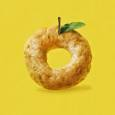
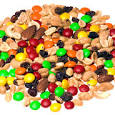
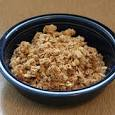
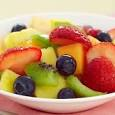
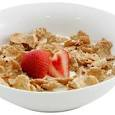
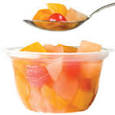
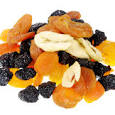
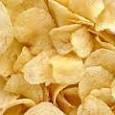
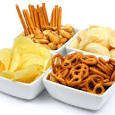
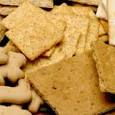
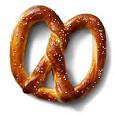
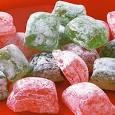
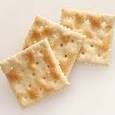
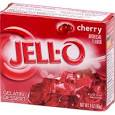
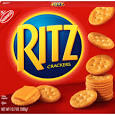

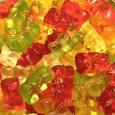












Add your comment